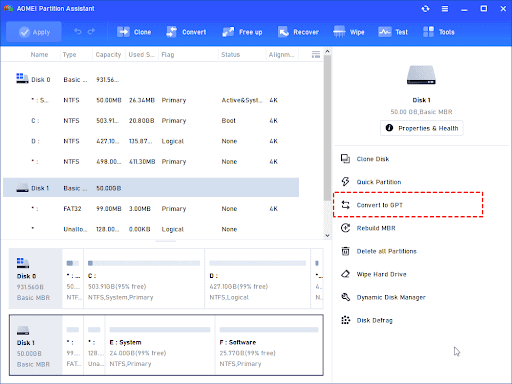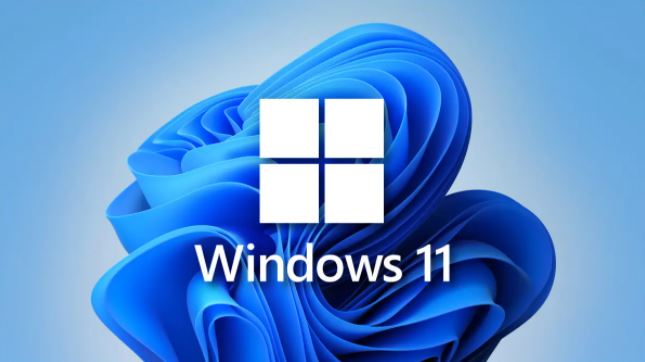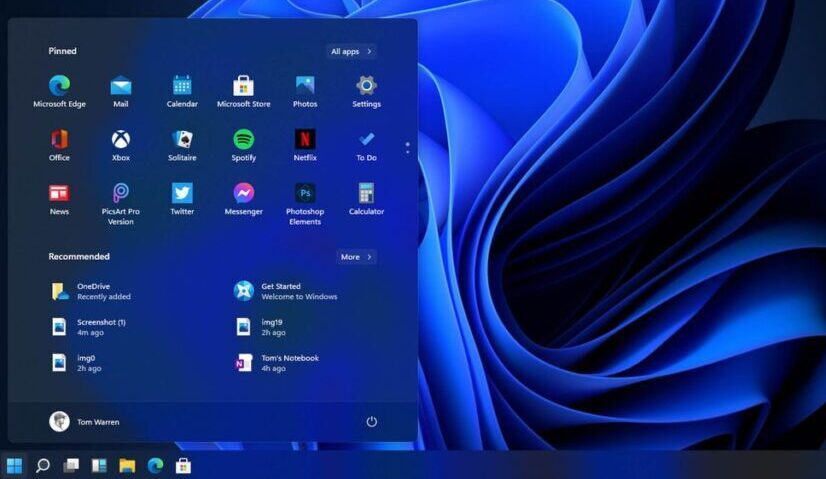Video RAM in Windows: On your Windows computer, are you encountering issues that are related to dedicated video RAM? Have trouble running graphically demanding apps like video editors and the latest video games? It’s possible that you need extra video RAM (VRAM).
But what exactly is this, and how exactly can one boost their VRAM? Continue reading for information covering everything you need to know concerning video RAM in Windows 10 and Windows 11.

What is the Dedicated Video RAM (VRAM)?
Video RAM, also known as VRAM (pronounce “VEE-ram”), is a specialized form of random access memory (RAM) that interacts with the graphics processing unit (GPU) of your computer.
The graphics processing unit, or GPU, is a chip found on the graphics card (also known as the video card) of your computer. This chip is in charge of showing images on your screen. The terms “graphics card” and “graphics processing unit” are frequently used interchangeably, despite the fact that this is technically inaccurate.
Your computer’s graphics memory stores information that the graphics processing unit (GPU) needs, such as game textures and lighting effects. Because of this, the graphics processing unit (GPU) can swiftly retrieve the information and send video to your monitor.
Because it is physically located in close proximity to the GPU on the graphics card, using video RAM to complete this task is a significantly faster alternative than using system RAM. Since VRAM was designed from the ground up to serve this kind of demanding function, we refer to it as “dedicated.”
How to check Video RAM in Windows
Following these instructions will allow you to quickly examine the amount of video RAM that is currently available to you in Windows 10:
- Open the Settings menu by pressing Win + I.
- Select the System entry, then click Display on the left sidebar.
- Scroll down and click the Advanced display settings text at the bottom.
- On the resulting menu, select the monitor you’d like to view settings for (if necessary). Then click the Display adapter properties text at the bottom.
- In a new window, you’ll see your current video RAM listed next to Dedicated Video Memory.
On a computer running Windows 11, you can access this menu by navigating to Settings > System > Display > Advanced display. After that, select a display, and after that, click the Display adapter properties button.
Depending on the kind of hardware you have, you will either see the name of your Nvidia or AMD graphics card under the Adapter Type heading. If you see something like AMD Accelerated Processing Unit or, most likely, Intel HD Graphics, then you are using integrated graphics. There is further discussion on this below.
How to increase VRAM in Windows
Investing in a new or upgraded graphics card is the most effective approach to boosting the amount of video RAM available to your system. If you are experiencing poor performance with your integrated graphics, changing to a dedicated card (even one of the finest budget graphics cards) will do wonders for the quality of the video output you are getting from your computer.
However, if this is not a choice for you (for example, on laptops), there are two other ways that you might be able to increase the amount of dedicated VRAM in your system.
How to increase VRAM in the BIOS
The first way involves making changes to the allotment of VRAM in the UEFI or BIOS of your computer. Once within your BIOS, seek for a menu choice that is either titled Advanced Features, Advanced Chipset Features, or anything else that sounds close. Look for a secondary category inside of it with a name like “Graphics Settings,” “Video Settings,” or “VGA Share Memory Size.”
These should include a setting that allows you to modify the amount of memory that is allocated to the GPU. The standard setting is 128 megabytes, but you can try increasing it to 256 megabytes or 512 megabytes if you have the available space.
However, this option is not available on all CPUs or BIOS. There is a workaround that you can use in the event that you are unable to update it.
Faking a VRAM increase in Windows
The details that are reported in the Adapter Properties box are not actually significant because most integrated graphics solutions automatically adjust to use the amount of system RAM that they require.
In fact, the value for Dedicated Video Memory does not exist at all while integrated graphics are being used. This figure is just reported by the system so that games can see something when they check the amount of VRAM you have available to them.
Because of this, you can vary the amount of VRAM that your system reports to games by modifying a value in the Registry. This does not in fact increase the amount of VRAM that you have; all it does is modify that dummy value. By increasing this amount, you may be able to fix a problem in which a game refuses to start, claiming that you “don’t have enough VRAM.”
Simply typing regedit into the Start Menu’s search bar will launch a window for the Registry Editor. When modifying the registry, keep in mind that changing the erroneous settings can render your computer unusable, so use extreme caution whenever you do so.
Head to the following location:
HKEY_LOCAL_MACHINE\Software\Intel
Select “New > Key” from the context menu that appears after you right-click the Intel folder in the left panel. Please refer to it as GMM. When you are finished, on the left side of the window, choose the new GMM folder, and then right-click anywhere inside the right side of the window.
Choose “New” followed by “DWORD (32-bit) Value.” Give this property the name DedicatedSegmentSize, then provide it a value while making sure the Decimal option is selected.
The least value that can be entered is 0, which will disable the entry, and the maximum number that can be entered is 512. After you have changed this setting and restarted your computer, check to see if the game runs more smoothly. In the event that this does not work, proceed to try a greater value.
Even though there is no assurance that these solutions will resolve the problems you are experiencing with your video memory, it is still a good idea to give them a shot if you do.
If you don’t have a lot of system RAM and you’re having difficulties running games that use integrated graphics, try increasing the amount of RAM that you have or making some of it available to the integrated graphics.
If your computer has integrated graphics, instead of the dedicated video RAM found in a graphics card, it will use the system’s regular RAM. Because of this, you will need a significant amount of RAM in order for games to operate well.
Upgrading your RAM or video card, like most other hardware-related activities, can be challenging on a laptop but is quite straightforward on a desktop computer.
Tasks that need the use of Video RAM?
Before we get into the specifics of the numbers for video memory, it is important to first discuss the components of games and other graphics-intensive applications that utilize the most VRAM.
The resolution of your display, or more especially the resolution at which you are playing a game, is a significant contributor to the amount of VRAM that is used.
The frame buffer is stored in video RAM, and it is responsible for keeping a picture in its memory both before and while your GPU is displaying it on the screen. Because higher-resolution images require more pixels to display, higher-quality displays (such as a 4K HDR panel) consume more VRAM than lower-quality displays.
Aside from the display on your monitor, the textures in a game can have a significant impact on the amount of VRAM you use. The majority of today’s PC games allow players to fine-tune graphical settings to improve either the game’s performance or its visual quality.
You might opt for a more budget-friendly graphics card to run games from several years ago at lower or medium settings, or even rely on integrated graphics. However, if your goal is to play the game at high or ultra resolution or apply custom mods to enhance in-game textures beyond standard levels, a substantial amount of video RAM becomes essential.
Anti-aliasing, which is the process of smoothing jagged edges, is an example of a feature that uses more VRAM than other beautification options since it requires more pixels. It is even more taxing on the system if you play on both displays at the same time.
The level of graphical detail presented by individual games can also result in a range of necessary quantities of video RAM (VRAM). The graphic requirements of an earlier cartoony game like Team Fortress 2 aren’t very high, but a game with a lot of fancy lighting effects and intricate textures, like Cyberpunk 2077, needs more resources.
On the other hand, it is possible to play PC games that were released more than 20 years ago using a low-cost card with only 2GB of video RAM (or even integrated graphics with 8GB or more of system RAM). The amount of random access memory (RAM) that was available to games in the past was not even close to what is available today.
Even if you have no interest in video games, a certain quantity of VRAM is necessary for the installation of certain popular programs. If you do not have sufficient video RAM, you may experience performance issues when using 3D design software such as AutoCAD, making particularly intensive edits in Photoshop, or editing high-quality video.
How much VRAM do you need for your task?
It should come as no surprise that there is no universally optimal quantity of video RAM (VRAM). However, we are able to offer some general recommendations regarding the amount of VRAM that should be included in a graphics card.
1-2GB of VRAM: The value of these cards is often less than $100. They provide higher performance than integrated graphics, but they are unable to handle the majority of recent games with settings that are above average. If you want to play older games that won’t run with integrated graphics, the only time you should buy a card with this amount of VRAM is if you want to play those games. Work in 3D or video editing should be avoided at all costs.
3-6GB of VRAM: These mid-range graphics cards are suitable for casual gaming as well as video editing tasks that are moderately demanding. Even while you won’t be able to use ultra-insane texture packs, you should be able to play recent games at 1080p resolution with very few problems. When compared to other options, such as 4GB, having 6GB is a more future-proof choice.
8GB-12GB of VRAM and above: Players that take their gaming seriously need high-end video cards with this quantity of RAM. You’ll need a graphics card with a lot of video memory (VRAM) if you wish to play the newest games at a resolution of 4K.
However, you should take the preceding generalizations with a grain of salt because they are just that: generalizations. The quantity of video random access memory, or VRAM, that is installed on a graphics card is determined by the overall performance of the GPU.
Therefore, a graphics card that costs only $75 will only have a little amount of VRAM, whereas a graphics card that costs $500 will have a significant amount more. If the graphics processing unit (GPU) of the card is not powerful enough to generate a movie that requires 8 GB of VRAM to store it, then having that amount of VRAM on the card is a waste.
When it comes to VRAM, extremes are not a cause for concern. To be able to play 2D indie platformers, you do not require a top-of-the-line card that costs $800 and has 12GB of VRAM. In all honesty, the only time you need to be concerned about how much video memory (VRAM) to obtain is when the card you wish to buy comes in numerous different VRAM configurations. Your choice of GPU should take into account more than just the amount of VRAM available.
Common Issues that arise from Video RAM
Keep in mind that much like regular RAM, the amount of VRAM does not necessarily correlate to improved performance. If the video card you’re using only has 4GB of VRAM and the game you’re playing only requires 2GB, switching to a card with 8GB of VRAM won’t make much of a difference in terms of performance.
On the other hand, a significant issue arises when there is insufficient available VRAM. If the VRAM on the system runs out of space, the system will have to rely on the regular RAM, which will result in a significant decrease in speed.
You will experience a decrease in frame rate in addition to other negative impacts such as texture pop-ins. In the worst-case scenario, the game can creep to a complete halt and become unplayable (anything under 30FPS).
Keep in mind that the amount of VRAM is just one of several performance factors. If your central processing unit isn’t powerful enough, producing a 4K video will take an extremely long time.
You are unable to execute many programs at the same time if your system does not have enough random access memory (RAM), and the performance of your system will also be greatly hindered if you use a mechanical hard drive.
In addition, some less expensive graphics cards still employ the outdated and slow DDR3 VRAM, which is a step down from the more contemporary DDR6 and DDR5 memory found in modern GPUs.
Talking to an individual who is educated about the subject is the best approach to figure out the specific graphics card and amount of video RAM that will work best for you.
You might ask a buddy who is up-to-date on the latest graphics cards for advice, or you could post on a community such as Reddit or Tom’s Hardware and inquire if a particular card would be suitable for your requirements.
Getting to know VRAM in relation to Integrated Graphics
Up until this point, it has been assumed that the computer you are using has a graphics card that is dedicated solely to rendering images. The majority of those who construct their own computers or purchase prebuilt gaming PCs do so with the intention of installing a video card into a desktop computer. Some beefier laptops even contain a graphics card that is dedicated solely to the laptop’s display.
On the other hand, low-cost desktop computers and off-the-shelf laptops do not come with video cards; rather, they rely on integrated graphics.
If your computer has an integrated graphics solution, then the graphics processing unit (GPU) is on the same die as the central processing unit (CPU), and it uses the same RAM as the rest of the system rather than having its own specialized VRAM.
This is a solution that is easy on the wallet and makes it possible for laptops to output fundamental graphics without the requirement of a video card that consumes a lot of space and power. However, integrated graphics are not good for gaming or other activities that require a lot of visuals.
Your central processing unit will determine the level of performance that you can achieve from your integrated graphics. The most recent Intel central processing units (CPUs) with Intel Iris Xe Graphics are more powerful than their less expensive and more outdated equivalents, but they still can’t compare to specialized graphics hardware.
As long as your personal computer is no more than a few years old, you should have no trouble viewing films, playing games with a modest level of difficulty, or working with fundamental applications for editing photos and videos that have integrated graphics.
However, it is not possible to play the most recent games that have graphically attractive visuals at a frame rate that is comfortable with integrated graphics.
Now you understand Video RAM in windows
You should now be familiar with what video RAM is, how much of it you require, and how to expand it. In the end, though, you should keep in mind that the performance of your computer’s video RAM is only a little part of the whole. Even with a large amount of VRAM, a GPU with little processing power would not function well.
If you want to improve the performance of your computer for gaming and graphics, you will probably need to upgrade your graphics card, processor, and/or RAM first. Once you have done all of these things, the VRAM issue should resolve itself on its own.
Would you like to read more about Video RAM in Windows-related articles? If so, we invite you to take a look at our other tech topics before you leave!










